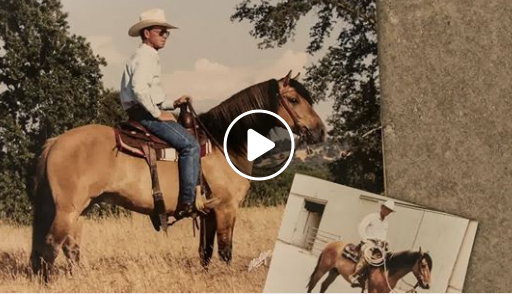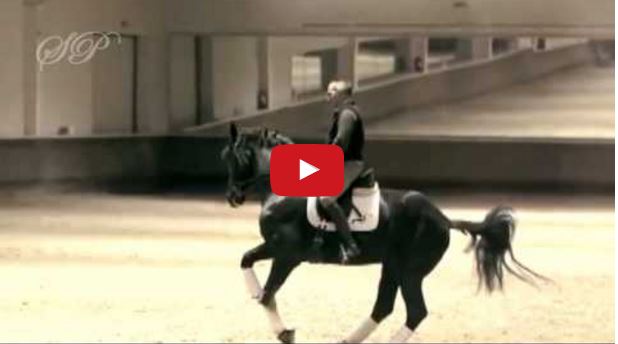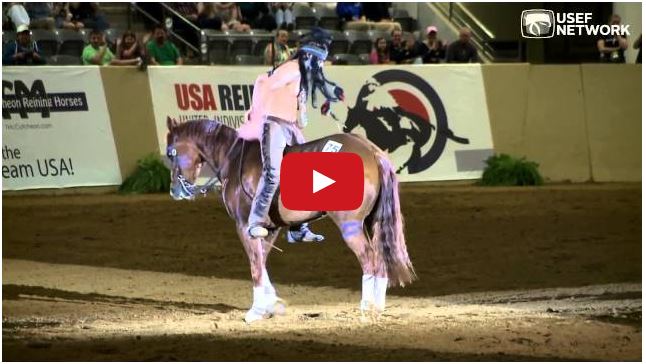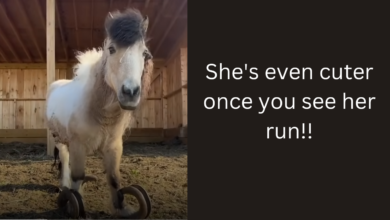10 Ways To Help Your Horse Love Jumping Again
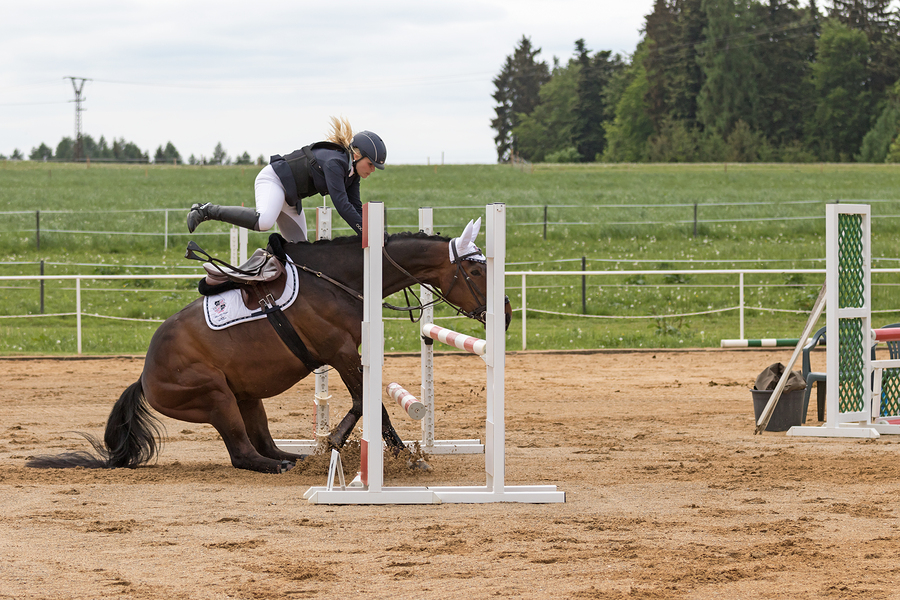
 You’re schooling your horse in the big arena. He steps willingly into a trot, calmly into a canter, and carries himself beautifully. You’ve just finished your warm up and decide to pop over a fence. Instantly, his head comes up as he tries to channel his inner llama, his stride shortens, and he seems to have no more go (or in some cases, no more whoa). Next, there’s some variation. He may slam on the brakes and throw his head high in the air, duck and send you tumbling over his neck like a gymnast, or swerve out of the way of the fence and run off with you. Maybe he goes over the fence, but pins his ears and throws a kick upon landing.
You’re schooling your horse in the big arena. He steps willingly into a trot, calmly into a canter, and carries himself beautifully. You’ve just finished your warm up and decide to pop over a fence. Instantly, his head comes up as he tries to channel his inner llama, his stride shortens, and he seems to have no more go (or in some cases, no more whoa). Next, there’s some variation. He may slam on the brakes and throw his head high in the air, duck and send you tumbling over his neck like a gymnast, or swerve out of the way of the fence and run off with you. Maybe he goes over the fence, but pins his ears and throws a kick upon landing.
Does this sound like a horse you know?
As much as we’d like to think our horses would jump the moon for us because they love us so much, every once in awhile they get sour. Most often, this is due to rider error. It could be excessive repetition, overworking, or discomfort when jumping due to bad riding habits. Thankfully, I’ve compiled a list of 10 tips to help you put an end to this vicious cycle!
1) Take away the jumps! If you’re scratching your head at this one, just think. A horse that is sour about jumping will most certainly appreciate a break from jumping. Now, this doesn’t mean that you need to quit jumping altogether if your horse is sour, but limiting over fence schooling to about three rides per week will allow your horse the mental vacation time he needs.
2) Add ground poles. Using placing poles on either side of a fence will help a horse to think more about where his feet are, as opposed to getting worked up over the jump. In addition, adding a ground pole at the base of a vertical helps your horse more easily determine a takeoff point. A good exercise for creating impulsion toward a fence is to set up a line of trot poles leading up to it, ending with a placing pole. This causes the horse to drive from behind and creates momentum.
3) Vary your jumps. You want a good mix of crossrails, oxers, verticals, flower boxes, cardboard boxes, tires – whatever you have at your disposal. This is excellent not only for competitive horses who need the desensitizing, but for bored horses who need the challenge. If your horse has more of a confidence issue, be sure to keep all these fences low – make it a no-sweat situation.
4) Switch up your course. It’s easy to understand why a horse might get sick of “outside line, diagonal line, outside line, repeat.” Instead of drilling these, which are mostly for developing a horse’s eye for a stride in the first place, set up a more engaging course. While it is harder to properly space individual fences, it will be worth it when you see your horse’s ears perk up.
5) Trot up, canter away. This exercise does wonders for a horse who charges blindly at a fence in the canter. Trotting allows him time to think, and a placing pole in front of a fence will help him properly gather himself for his takeoff. Circling at the canter after landing should keep his mind busy and prevent any running off.
6) Change of scenery. Cross country schooling, obstacle-free hill work, general trail riding, or anything of that sort have an amazing effect on a sour horse. Sometimes you just need to get him out of the arena so he forgets he’s working.
7) Mix in flatwork. Not all over fences schooling needs to be a warm-up, jumps, jumps, jumps, and a cool down. How boring! How could a horse not resent his job if it always looked like this? In between courses, or even just between fences, make your horse think about what you’re asking him to do. If he’s getting worked up, circle. Figure eight. Slow to a trot. Make him work correctly on the flat, even within a jumping session – a workout should never be so calculated that your horse can anticipate what’s coming next.
8) Know when to quit. This is a big one. Always finish on a good note, and never overkill a jumping session. Jump sparingly, keep your fences relatively low if you know you’ll need to practice any longer than usual, and quit the second you see improvement.
9) Take the unexpected route. This goes hand in hand with switching up your courses. Don’t want to lug all the fences around? Get creative! A rollback, a circle around a fence you’ve already jumped, a tight turn, or a bending line all urge your horse to be attentive and engaged.
10) Halt. Practice halting on a straight line after a fence – just like an equitation class! What better reward for getting over a fence than letting your horse stop?
At the end of the day, patience is key. You should always try to get to the root of the problem before resorting to desperate measures, but hopefully these 10 tips can save you some of the headache. Happy schooling, and may your horse forever love his job!
Written By Natalie Dutra. Share this on Facebook if you know a horse who would enjoy these exercises!

